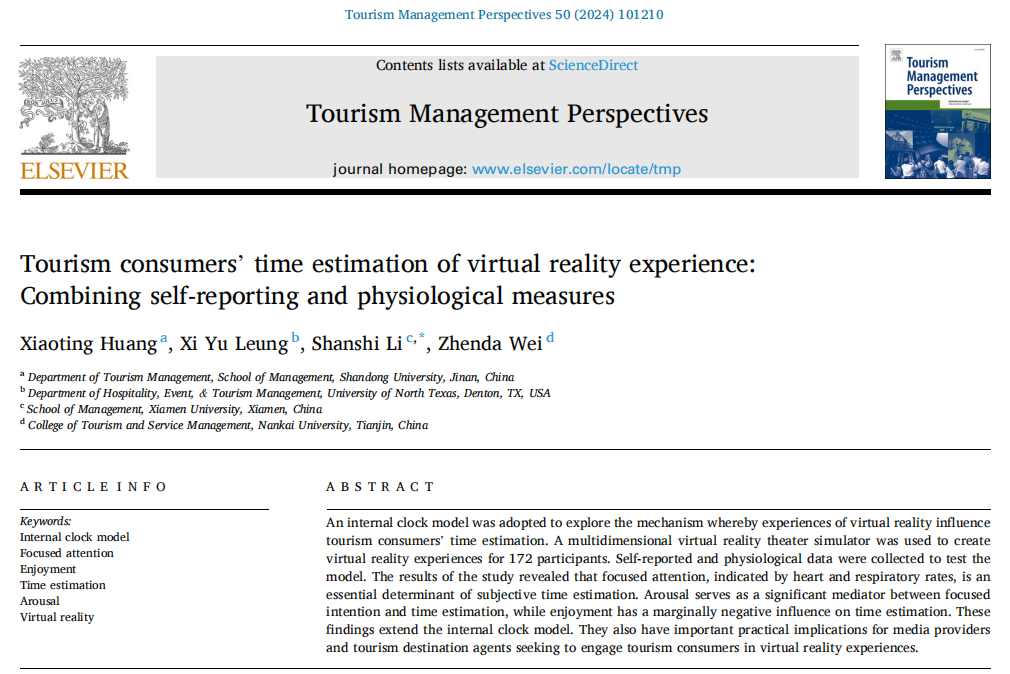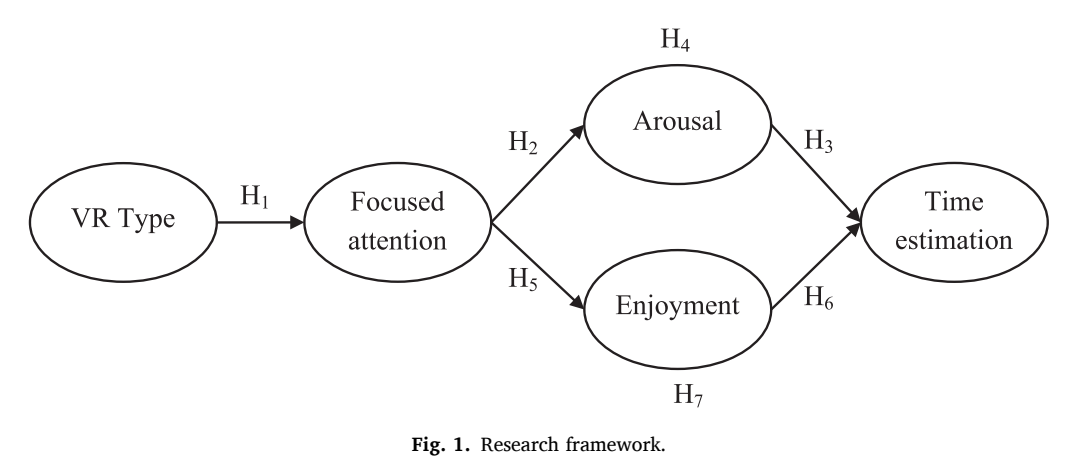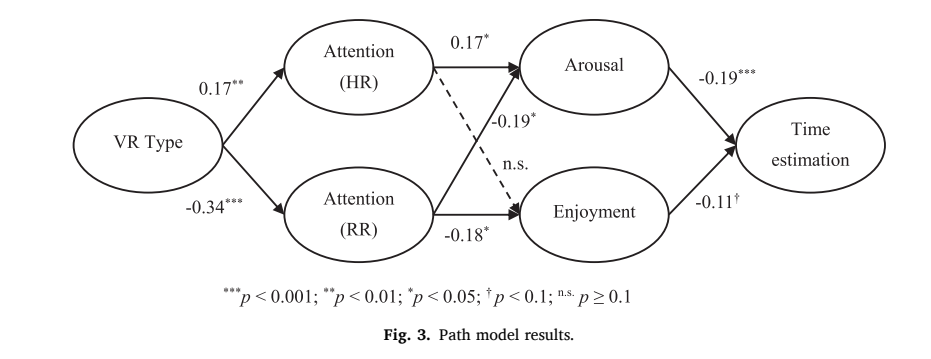Huang Xiaoting is a professor at the School of Management, Shandong University. Her main research fields include basic theory of tourism, tourists’ spatial-temporal behaviour, spatial planning of tourism activities, the health and educational value of tourism, etc. She has presided over the Youth Program “Research on a Tourism Time Planning Method Based on Tourists' Spatial-Temporal Behavior Routine” and the General Program “Research on Spatial Production and Construction of Tourism Activities Based on Tourists' Spatial-Temporal Behavior Routine” of the National Natural Science Foundation of China(NSFC). She has published many papers in SSCI journals like Tourism Management, Tourism Management Perspectives, Tourism Geographies, etc. and CSSCI journals including Tourism Tribune, Tourism Science, and Human Geography.
Professor Huang Xiaoting (the first author) of the School of Management of Shandong University, Associate Professor Yu Xi (the second author) of the Department of Hotel, Event, and Tourism Management at the University of North Texas, Associate Professor Li Shanshi (the corresponding author) of the School of Management of Xiamen University, and doctoral student Wei Zhenda (the fourth author) of the College of Tourism and Service Management of Nankai University published the research “Tourism consumers’ time estimation of virtual reality experience: Combining self-reporting and physiological measures” on Tourism Management Perspective (Q1, IF 8.7), an international authoritative journal of management and tourism.

The question of how to perceive the passage of time has attracted considerable attention in cognitive science and psychology, and time estimation by tourists is an important factor in evaluating the tourism experience. However, the complex process of tourists’ time estimation in virtual reality experiences has not been fully explored in the existing literature. The study introduces an internal clock model to explore how different types of virtual reality experiences affect tourists’ time estimation through the potential mechanisms of focused attention and arousal. The study attempts to extend the original internal clock model by including enjoyment as a possible prerequisite for time perception in virtual reality experiences. In addition, physiological data were collected for use as a focused attention measure to complement self-reported survey data. The study provides a theoretical basis for the internal clock model of virtual reality tourism and related research by elucidating the antecedents of time estimation and the key role of enjoyment in the process.

The internal clock model is a mechanistic model that explains how humans perceive time. The model contains a Pacemaker, Accumulator, and Comparator, and focused attention and arousal state are influencing factors. Focused attention has been shown to have the ability to enhance the sensory experience and cognitive processing of information in virtual reality tours, and different types of virtual reality experiences may result in different levels of attention. The state of arousal is related to the regulation of the autonomic nervous system and involves the balance of physiological processes. A high level of focused attention contributes to the arousal state. In addition, pleasure may lead to a shorter time estimate, so the study incorporated enjoyment into the internal clock model to explore.

The study adopted a between-subject experimental design and two interactive virtual reality experience videos (310 seconds and 120 seconds) and two sightseeing virtual reality experience videos (310 seconds and 120 seconds) were selected as experimental materials. The intrinsic mechanism of travelling time estimation was explored by comparing the differences in travelers’ time estimation under different virtual travel experiences. During the experiment, a cardiac monitor was used to monitor and record the participants’ physiological response data, such as heart rate and respiratory rate. The results of the study showed that focused attention, as indicated by heart rate and respiratory rate, was an important determinant of subjective time estimation. Arousal significantly mediated the relationship between focused attention and time estimation, while enjoyment had a slight negative effect on time estimation.

The study provides an important theoretical contribution to the study of time perception and virtual reality tourism. First, the results of the study empirically demonstrate the effect of interactive virtual reality tourism experience on tourists’ time estimation ability, which responds to the call for research on the antecedents of tourists’ time estimation. Using an internal clock model, the study reveals the important role of focused attention and arousal in influencing time estimation, elucidates the process mechanism of user experience in virtual reality tourism, and demonstrates the role of focused attention as a “gatekeeper”.
In addition, the study confirms the importance of enjoyment and emotional valence in individual time estimation, thus further refining the internal clock model. At the methodological level, the study allowed subjects to report objective time estimates instead of rating subjectively time-estimated perceptions by Likert scales. At the same time, focused attention was also measured based on heart rate and respiratory rate to avoid cognitive bias and social desirability responses, which significantly improved the reliability and validity of the results.